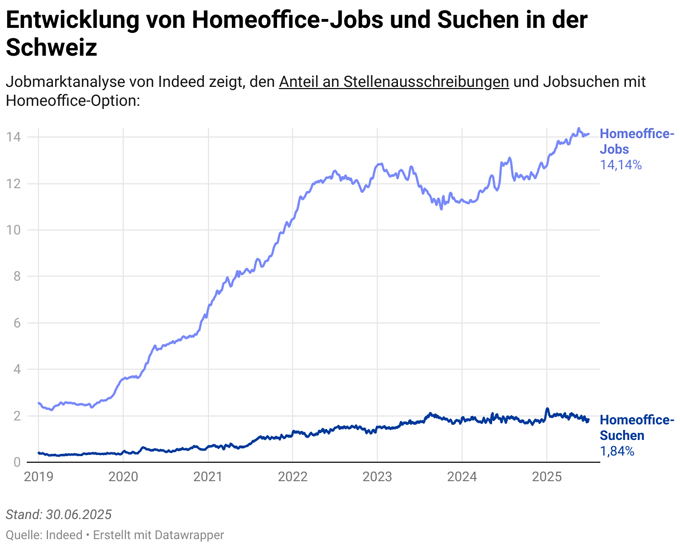Exercise in the home office: no chance!
A study from Germany sounds the alarm: exercise in the home office is even rarer than in the corporate office. Today, people move even less at work than during the "prescribed" home office time in the pandemic.

There is a lack of movement in the home office: The evaluation of a Reader survey "Movement in office work 2021" last May showed that almost two-thirds of home workers move even less at home than on a regular workday in the company office. In the first year of Corona, too much sitting was done at the office, too little standing and too little walking. But the results at home were even worse than in the corporate office. But has the situation improved in the meantime? Are people moving more and has more been invested in solutions that promote movement in the office and home office?
Movement in the home office and in general remains insufficient
The current results of the representative reader survey of the blog "Office Roxx" are sobering: The more than 2,300 office workers from Germany surveyed were only moderately satisfied with the proportion of physical activity in their own lives. The average grade achieved was 3.4. This is roughly the same as the previous year's score of 3.5, so it remains a poor report card for exercise. (Editor's note: In Germany, unlike Switzerland, the school grade 1 is the best and 6 the worst).
Two-thirds move less in the home office
Whereas in the first year of the pandemic, based on the previous year's results, the home office share of own office work among office workers in Germany was 62 percent, a large proportion of home workers apparently returned to the office in the second corona year. The share of home work was only 44 percent on average.
But do people move more or less during a workday in the home office than during a day in the company office? Less! The proportion has even increased compared to the previous year: 61 percent (2021: 57 percent) move less at home than in the office. In contrast, 39 percent (2021: 43 percent) feel they move more at home than in the office.
Even more sitting in the home office than in the office
The posture mix recommended by experts for office work is: 60 percent sitting, 30 percent standing and ten percent walking. According to their own statements, the survey participants currently spend an average of 75 percent of their home office day sitting, ten percent standing and five percent walking - little change compared to the previous year: 73 percent sitting, eleven percent standing and seven percent walking. In the office, the average mix is: 64 percent sitting, 18 percent standing, 18 percent walking. In the survey results from 2021, it was 65 percent sitting, 18 percent standing, nine percent walking.
Home office equipment leaves much to be desired
The answers to the question "How ergonomic or conducive to movement is your workstation in the home office?" resulted in an average school grade of 3.9 (2021: 3.7). With regard to the workstation in the office, an average grade of 2.9 was achieved here (previous year: 3.3). Ergonomics and movement promotion continue to leave a lot to be desired, as expected especially in the home office. It is astonishing that the assessment here has even deteriorated compared with the previous year. Perhaps, however, awareness of the need for ergonomics and movement promotion has increased at home.
For more movement in the home office and office
The fact that, according to the survey results, almost one in three (29 percent) intend to invest in ergonomic or exercise-promoting equipment for their home office workplaces is seen by the study authors as a good sign. The four percent increase over the previous year's survey shows that employees also want to work healthily and productively at home. Nevertheless, there is room for improvement in all areas. In particular, it is important to note that solutions that promote exercise must also be used for their intended purpose.
"It's not all sunshine in the home office. The pandemic has clearly shown that the four walls at home are not the better place to work for every office worker. Above all, each individual should work where this is best possible in terms of his or her health, well-being and productivity, and in harmony with the culture and goals of the employer," sums up Dr. Robert Nehring, who is also editor-in-chief of the blog "Office Roxx„.









